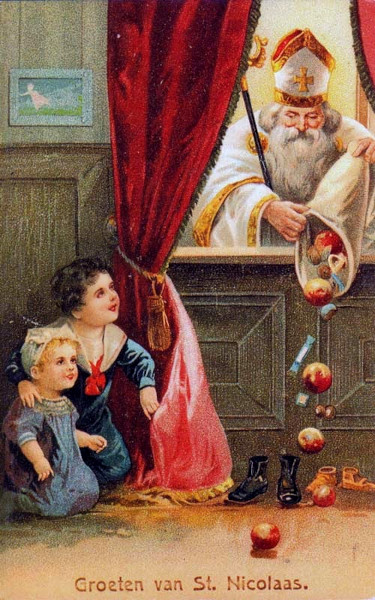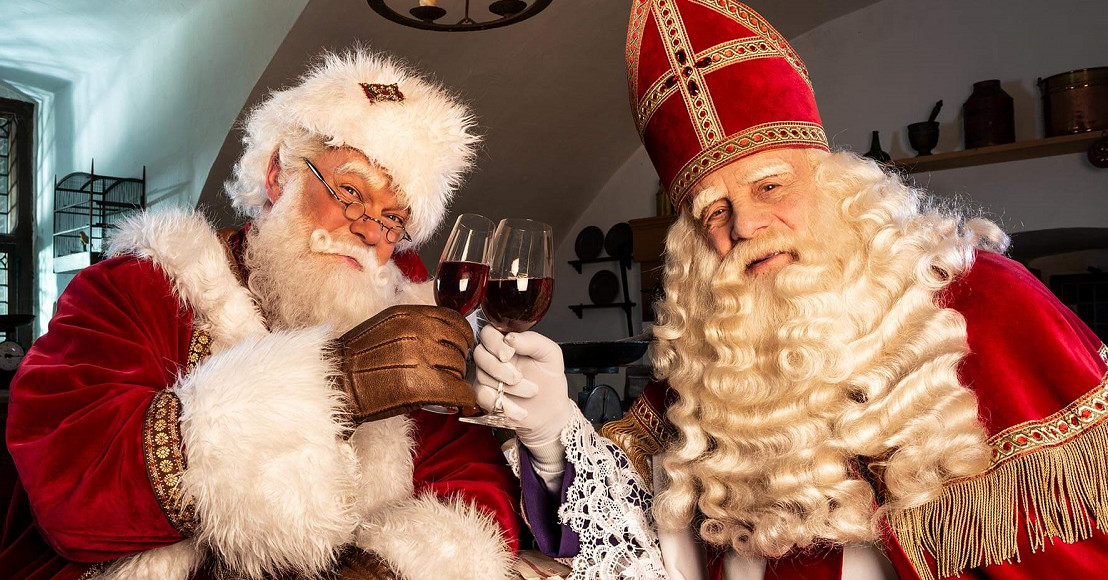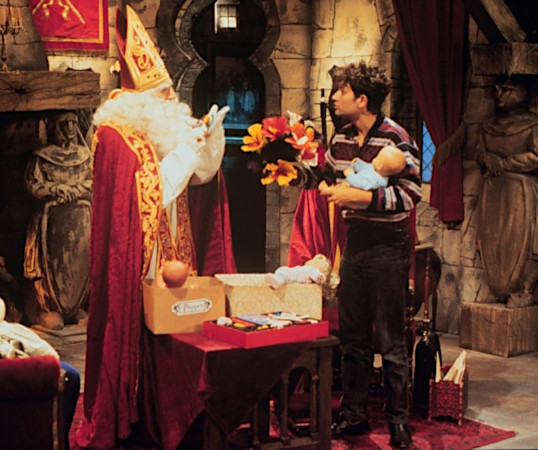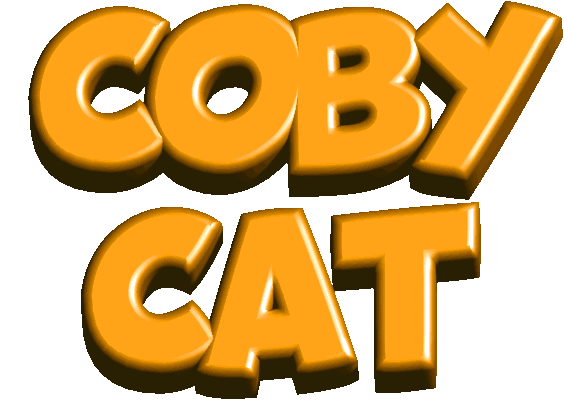Sinterklaas in Belgium and the Netherlands
One of the most important children's holidays in Belgium and the Netherlands is definitely the Feast of Saint Nicholas (Sinterklaas in Dutch). As a Belgian, in the Flemish region, I'm of course mostly familiar with its traditions, and my comparison with the Dutch traditions mostly relies on my own observations and second-hand knowledge.
The run-up to the festival is roughly the same in both areas, and roughly consists of the following elements:
Sometime in November, Saint Nicholas leaves his castle in Spain and travels to the Low Countries by steamboat. He brings along his employees, most notably Black Pete, and his horse. In Flanders, he arrives in the port city of Antwerp, while in the Netherlands he chooses a different city each year. Children send him a letter with their wishlist, often pasting pictures cut from a toy catalog.

What differs is the climax and one core tradition.
In Flanders, where I grew up, putting a shoe in front of the fireplace (or equivalent central place of the living room) traditionally only happened on the evening before December 6th. And even then, the presence of this shoe at all might have been a later Dutch import. Regardless, we'd put in a drawing and a carrot or sugar cubes for Saint Nick's horse, and then went to bed. Presents and candy awaited us the following day. This is how my father and I both experienced it. Some friends from elsewhere in the country report slightly different traditions. From what I read in the newspapers, the proper Dutch shoe practice is getting more common. Over there, children start putting their shoes as soon as Saint Nick has arrived in the country, and it occasionally gets filled with candy.
The most notable difference, however, is when the actual feast happens. While we Flemish have to wait overnight, like with the American Santa Claus, in the Netherlands the practice emerged that presents would already be delivered and opened the evening beforehand, with even the adults getting to join in on the fun.
History
The modern mythology of the feast of Saint Nick can mostly be traced to Saint Nicholas and his Servant, an 1850 book by Dutch teacher Jan Schenkman. Not only does it introduce the black servant (who would later adopt elements from older boogeyman traditions and other companions), it also establishes the steamboat as his method of transportation and Spain as his country of origin. Just like the black servant, the steamboat can probably be explained in the context of the Dutch colonization of Indonesia. In fact, in the same year as the book was released, princess Marianne brought a Nubian slave she bought to the Netherlands by steamboat. Regardless of whether that directly inspired Schenkman, it does somewhat illustrate what was culturally relevant in the country at the time.
Why Spain? Well, it's possibly because Spanje (Spain) rhymes very well with appeltjes van oranje (little oranges), one of the typical gifts. It's suitably far away and exotic, not unlike the North Pole. Sure, the historical Nicholas lived in Myra. But even though Saint Nick is still dressed as a bishop, the religious and historical context is probably almost as irrelevant to the children's feast as it is for his American counterpart Santa Claus.
Comparison with Santa Claus

Speaking of Santa Claus! Both of these bearded old men are dressed in red, but Sinterklaas is usually not depicted as chubby as Santa. As mentioned above, the exact nature of his clothing is also different.
While the name Santa Claus derives from Sinterklaas, it's important to note that they are named differently in Dutch. Santa Claus is referred to as the Kerstman, which literally means Christ(mas)-man. I suppose that kinda implies he's Jesus… 🤔
As with Santa Claus, in older depictions Sinterklaas was not always depicted exclusively in red. An example is the postcard shown earlier on this page.
The Black Pete controversy
Once merely depicted as Saint Nick's servant, Black Pete morphed over time into a stern punishing figure
(taking over the disciplinary role Saint Nick himself had in the further past) and
finally into a lovable, approachable character that kids often prefer to Sinterklaas himself. And while Black
Pete became a positive character, his appearance, specifically the blackface, stuck around. Over the years,
it's been explained away by saying, oh, it's just soot from the chimneys
, but… let’s face it, it’s still
pretty awkward.
Contrary to the common impression that this controversy is a new development influenced by what's going on in the United States, the blackface has been criticized for a long time. Most notably in 1987, it was already brought up in the Dutch version of Sesame Street, but according to historians the debate has been going on since at least the 1930s. Still, it's only since 2011 or so that it's truly gotten this much attention.
It's a very touchy subject for many. For a lot of regular people, they might be conflating Black Pete is
something with quite problematic origins
with I was bad for enjoying this thing as a kid
. As in,
the feeling that it's not problematic aspects of a tradition that are being criticized, but the persons
themselves.
Alternatives
Several alternatives have popped up. The most common and most straightforward one is the Soot Pete. This Pete drops some of the stereotypical attributes, and instead of blackface just has black smudges more accurately reflecting the soot-based explanation. This is not uncontested, of course. For some so-called traditionalists, any compromise is already too much, and for some activists, this does not go far enough.
There's the rainbow or color Petes. Their faces are instead painted in a bright color, or sometimes like a food, such as a waffle or cheese.
And lastly, some urge to remove the Pete character entirely, or to replace the entire feast of Saint Nick with something new. The most notable in recent years, mostly because of heavily politicized opposition to it, is Queen Nikkolah. This is a character developed by a performance artist as a black and female alternative to Saint Nick. It remains to be seen how much staying power it has, however.
Saint Nick on TV

In 1993, the Flemish public broadcaster started airing Dag Sinterklaas (Hello Saint Nick). Possibly owing to its still lofty aspirations of popular edification, this television series about the feast was pretty pure. It featured only three main characters: a somewhat ill-tempered and severe Saint Nick, a fun and approachable Pete (unfortunately black-faced), and one everyman character asking them questions.
I think the restraint of this adaptation, as well as the strong acting and timeless production design, means this adaptation has aged very well, if we ignore the unfortunate elephant in the room.
A 2019 reboot opts for a Soot Pete, but beyond that sensible change, many of the attempts at modernization fall flat to me. The cast has been expanded with a bunch of comic relief characters, a few of which feature awful Spanish stereotypes. That makes it feel like a bit of a proverbial Echternach procession: three steps forward, two steps backward.
As a kid I often zapped to Dutch television to see their Saint Nick programming. Whereas Flanders just re-aired the same series from the 90s, the Netherlands was more developed in that regard, for better or for worse.
By the early 2000s they had a dedicated news journal, as well as a daily soap series with new overarching plotlines each year, and a massive cast of characters. Whereas Flanders tends towards a single Pete outside of the entrance ceremony, the Netherlands had a large set of Petes, differentiated by their job or attributes in a manner that's similar to the Smurfs. There was a Head Pete, a Cool Pete, a Dancing Pete, a Baking Pete, and many others.
Typical treats
Beyond speculaas, as I have explained in my page on Belgian food, the other treats typically associated with Sinterklaas in Belgium are Mandarin or clementine oranges, marzipan, and chocolate coins.
In the Netherlands, they add a lot more to the mix. Beyond their more elaborate speculaas, they also have two speculaas variations. Kruidnoten (Spice nuts) are little extra crunchy drops of speculaas, and are illustrated on the background of this page. The other variation is known as taai-taai (chewy-chewy) or pepernoten (pepper nuts) depending on the shape, and they are a very chewy form of speculaas with aniseeds added.
Other Dutch staples include chocolate letters, Dutch letters (made of pastry), and spiced bishop's wine (for the adults).

